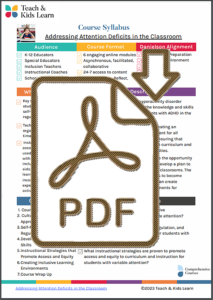Building Academic Vocabulary and Deep
Comprehension, Grades 6-12
Course Description
 |
This course on building academic vocabulary and reading comprehension will provide educators with the knowledge and skills necessary to support language development and reading comprehension effectively.
The course will cover key instructional strategies for building academic vocabulary and improving reading comprehension, including techniques for introducing and reinforcing language skills, such as morphology and syntax. |
Educators will also learn about the unique assets and needs of multilingual learners and will explore strategies for supporting their vocabulary acquisition, reading comprehension, and language development. In addition, the course will examine the importance of teaching content vocabulary, its role in improving reading comprehension, and discipline-specific knowledge.
Throughout the course, educators reflect on their teaching practices and develop a plan for incorporating effective vocabulary and reading comprehension instruction in their classrooms. The goal of the course is to empower educators to become confident and competent teachers who can effectively facilitate students’ language development and reading comprehension.
Essential Questions
- What evidence-based instructional strategies best support the acquisition of academic vocabulary and reading comprehension skills?
- What is the relationship between vocabulary and reading comprehension?
- What are efficient and effective ways to build language skills in multilingual learners?
- How does instruction in content area vocabulary build discipline-specific knowledge?
Course Agenda
|
| Course Syllabus |
|
Comments from Teachers
“I really like the sketch note-taking and using tiers to prioritize vocabulary instruction. I’ll use morphology in my instruction systematically and explicitly. I’ll also use the wide variety of strategies I’ve learned to practice and reinforce vocabulary after it is introduced.”
“This course taught me about the importance of having culturally relevant texts in my instruction. It also taught me how to implement vocabulary strategies for linguistically diverse students.”
Danielson Teacher Framework Course Alignment


